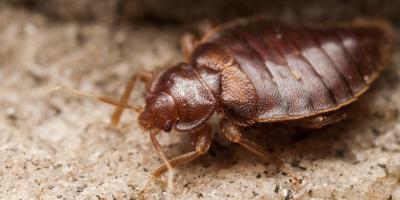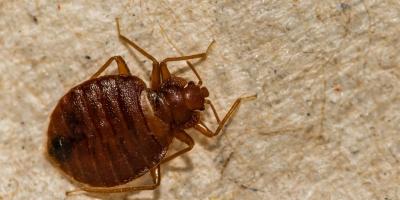Guess Who Else Can’t Wait to Travel…?

Lockdown measures and stay-at-home orders in response to the pandemic have curbed more than just the spread of the novel coronavirus. As Americans have traveled less often and across shorter distances in the early months of 2020, the bed bug population has also begun to decline. Bed bugs are primarily spread through human travel, so it makes sense that with less movement comes fewer bed bug problems.
But, as states begin to ease restrictions and businesses attempt to reopen, people are on the move again. What does this mean for bed bugs?
A Boom in Bed Bug Reports?
Most pest control professionals report the highest number of bed bug cases in the summer. It’s probably no coincidence since summertime is the season when Americans take the most vacations. And it’s not just a one-way street -- bed bugs are brought from home to hotel, then from hotel back to a soon-to-be newly-infected home. That’s why it’s important when people do travel to thoroughly inspect their hotel room for bed bugs and report any infestation they find immediately to the front desk.
With businesses reopening and travel restrictions being lifted around the United States, pest control professionals are bracing for an uptick in bed bug calls, but there’s a lot you can do on your own to avoid becoming one of the callers.
Protecting Your Preferred Guests
As a hotel manager, there’s little you can do to prevent travelers from showing up to your facility with bed bugs in tow. But there are some things you can do to catch a bed bug problem early, before it gets out of control and spreads into other guest rooms.
First, educate your staff and teach them how to recognize the subtle signs of an early bed bug infestation:
- reddish or rust-colored stains on sheets and pillowcases
- small egg shells or eggs in the bedding
- groups of tiny black dots, smeared like oil
- live bed bugs, about the size of an apple seed, scurrying around
Also make sure you properly document everything. You should keep a record of every complaint, inspection and especially treatment measure you take, including when, what part of your facility was treated, and the names and phone numbers of anyone involved, along with the pest control company that handles your pest problems.
Incorporate preventative measures, such as bed bug mattress bags and pillow encasements, and hire a pest control company to provide routine treatments and inspections. The more you can do to make your facility inhospitable to any bed bug tagalongs your guests might bring, the less likely the introduction of bed bugs to a single room becomes a hotel-wide infestation. Providing luggage racks for your guests so they don’t have to put their luggage on the floor or beneath the bed.
If you do find bed bugs, be sure to dispose of them appropriately so you don’t risk contaminating other areas or even other properties. Vacuuming, freezing and steam heating are three tried-and-true methods of dealing with bed bugs. For example, freezing bedding for 48 to 72 hours can help eliminate bed bugs and their eggs. Conversely, steam washing will do the same thing.
Finally, you’ll want to partner with a pest control professional who will support your efforts with industry-leading protection, both inside and outside your building.
Get ahead of them this year with a bed bug preventative maintenance program for your hotel. Schedule a free consultation with a commercial service planner to discuss all of your pest control concerns.



